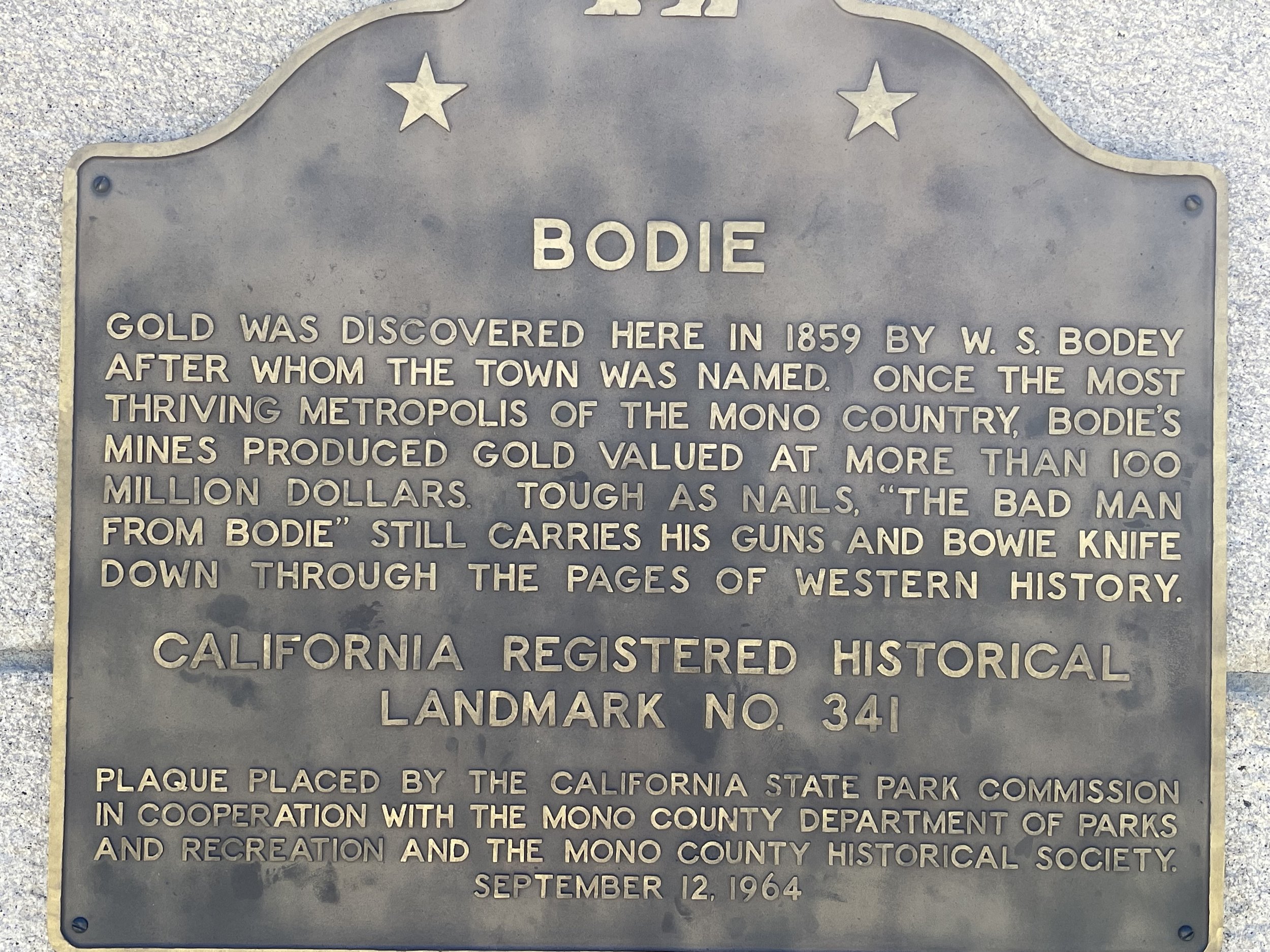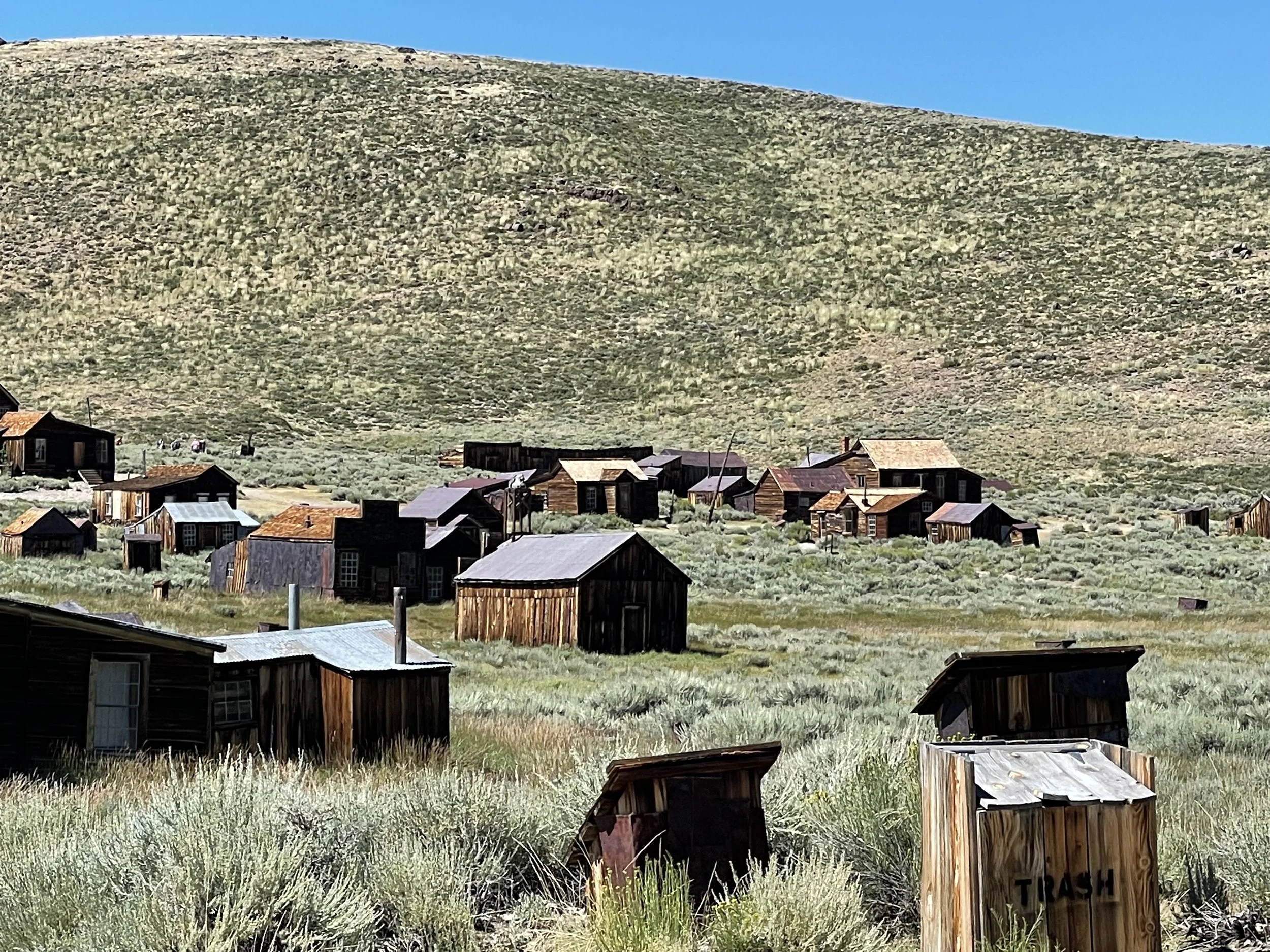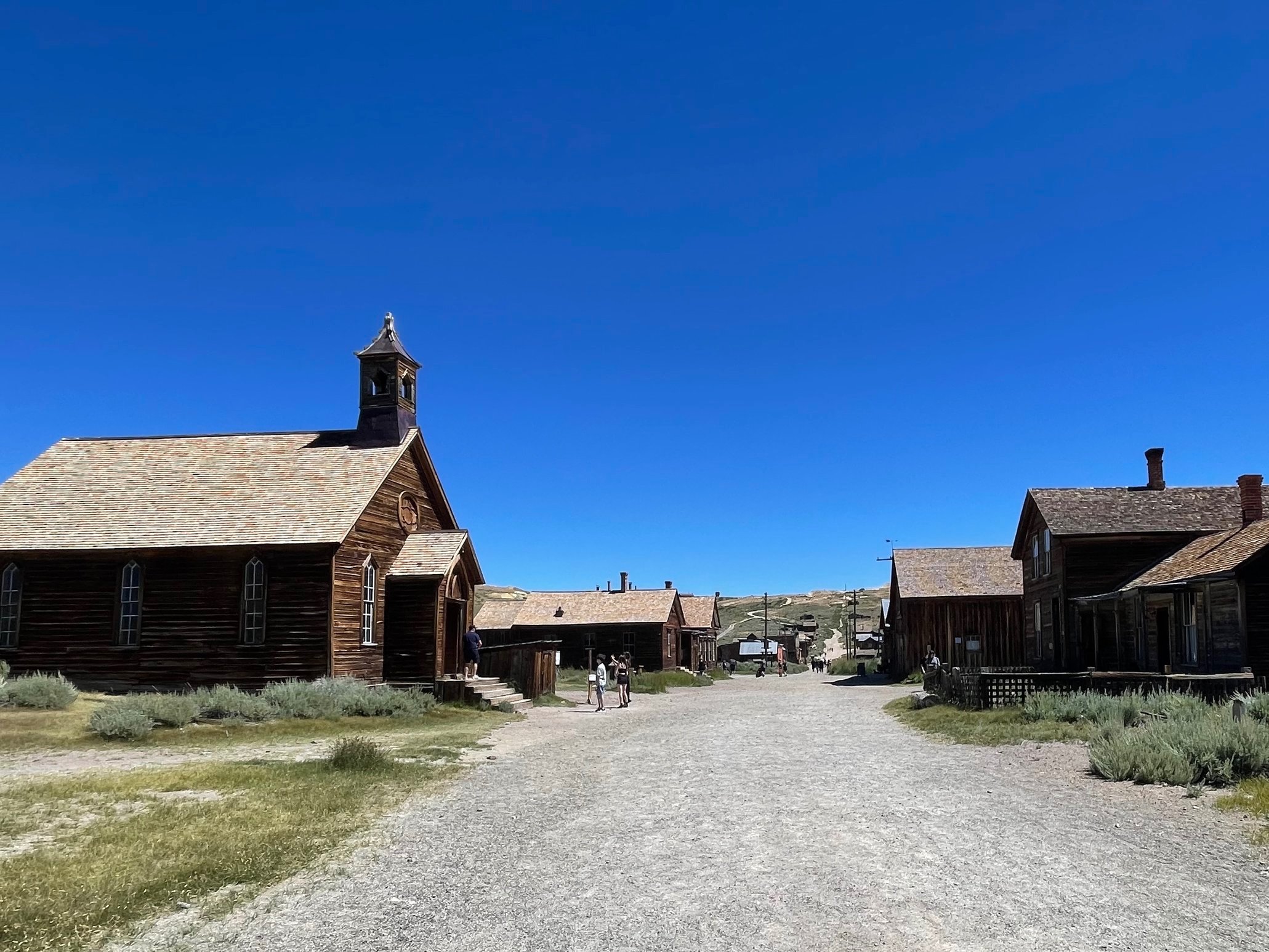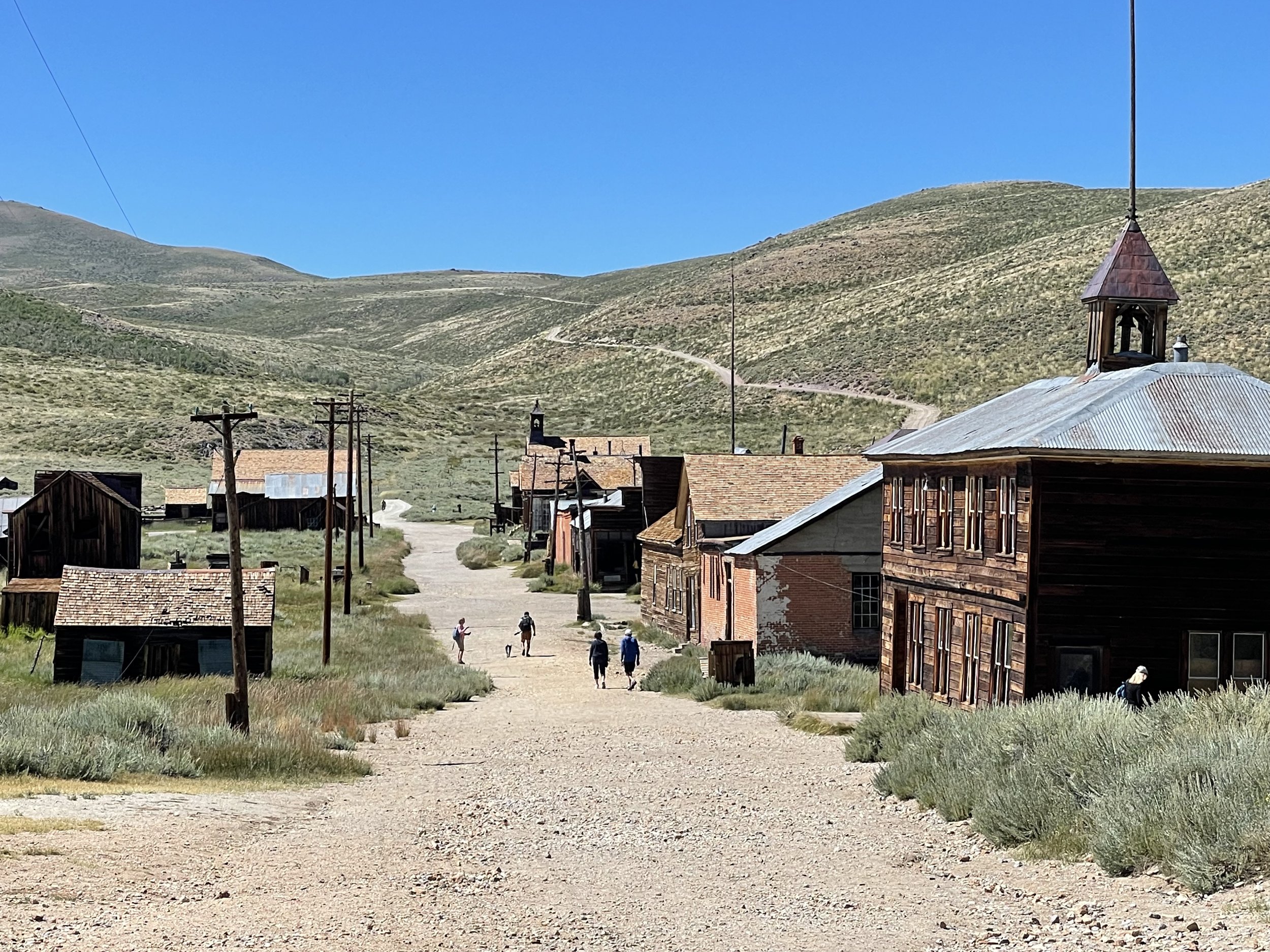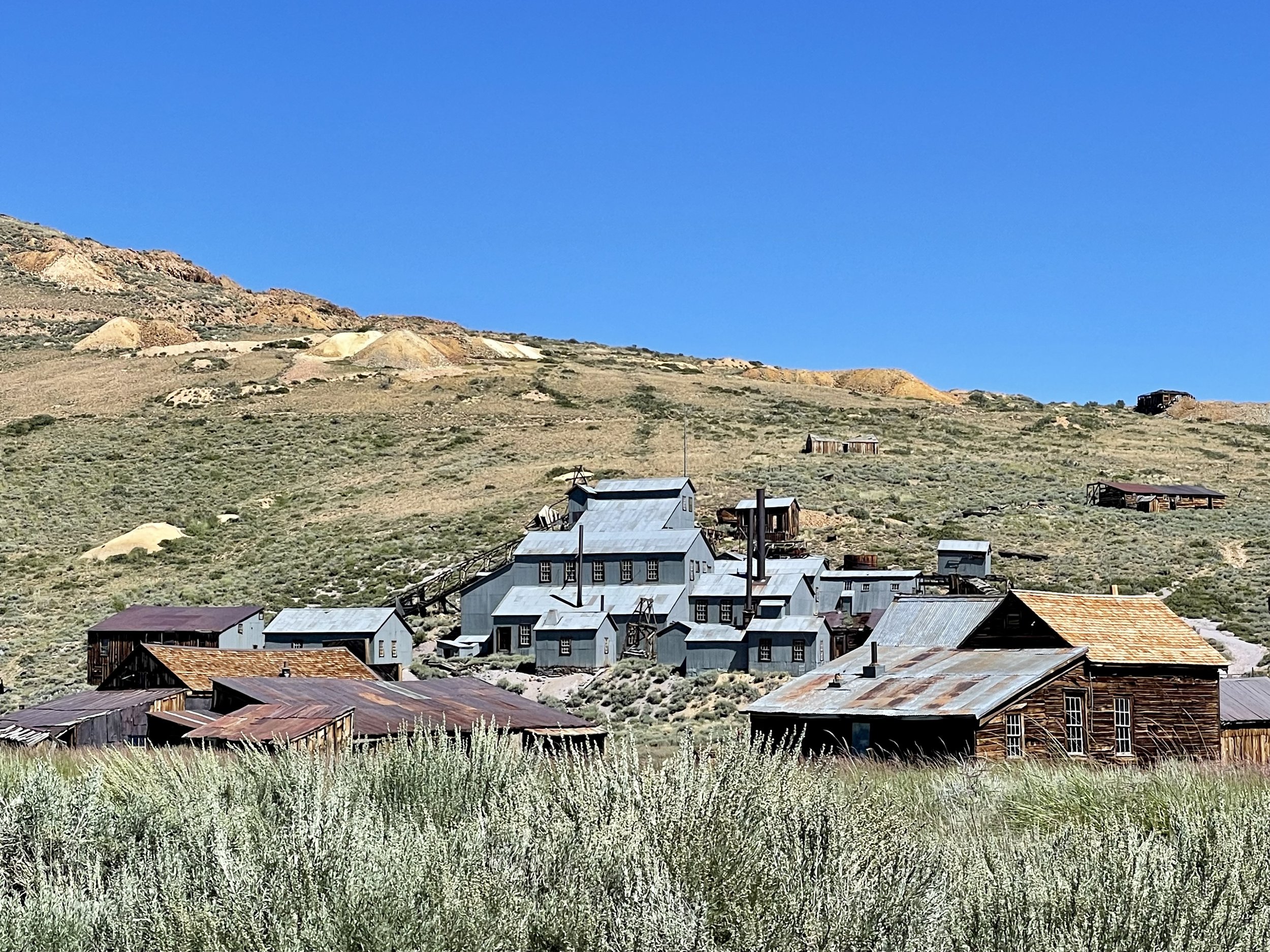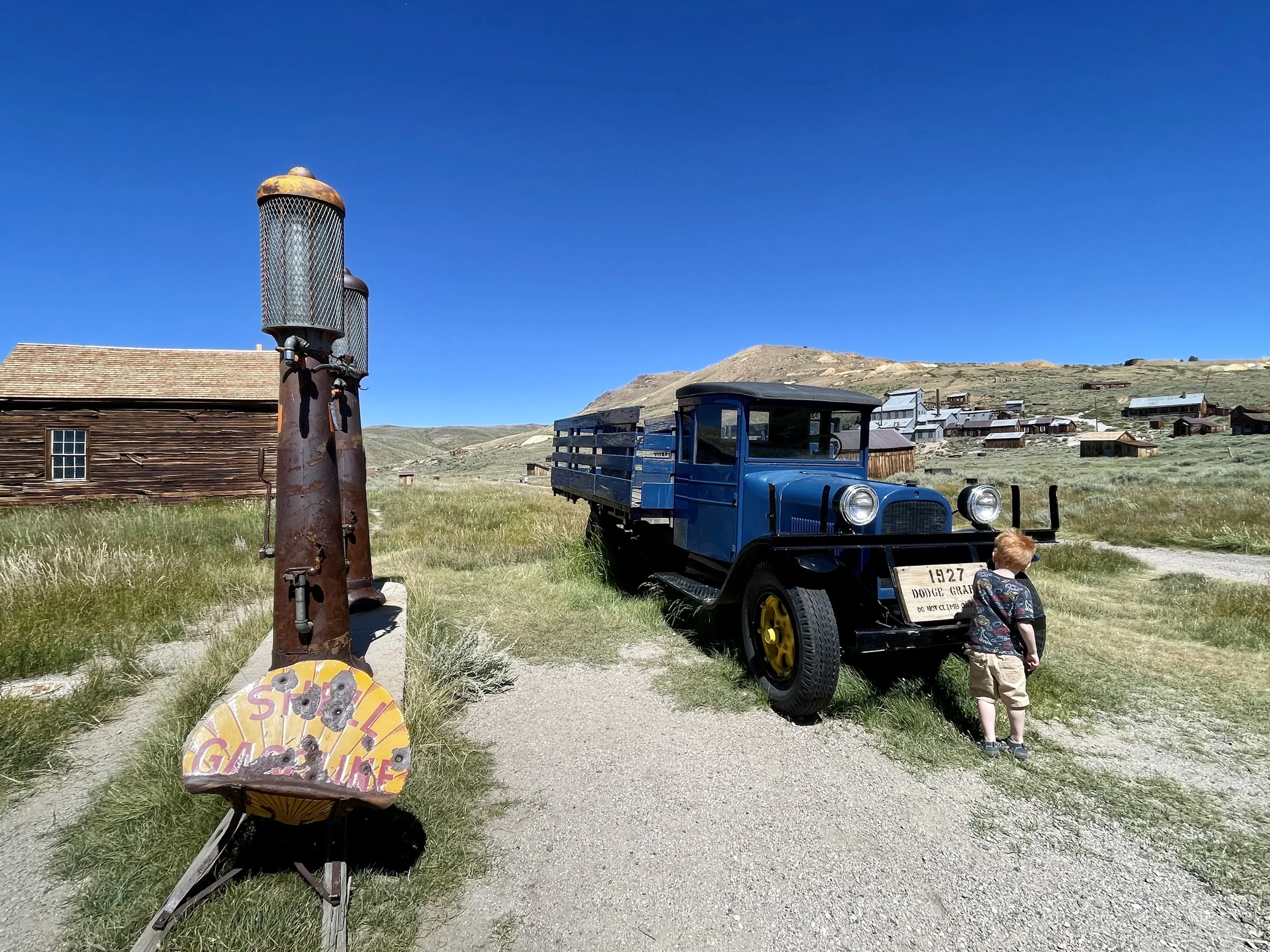A Preserved Past
This blog post was written during our Great American Road Trip which you can read more about by clicking here
As we were planning our Great American Road Trip, a day we were most looking forward to was when we would visit both Death Valley National Park and Manzanar National Historic Park.
However, Mother Nation (or Climate Change), had other ideas as a hurricane hit southern California which prevented visitors. We were bummed.
In looking into other options, we discovered Bodie State Historic Park and it appeared intriguing. We learned that the state of California made an abandoned town into a state park and the town has been preserved just as people had left it. The only alterations to the buildings are to maintain their structures. This sounded fascinating so off we went!
Bodie was a town in California which experienced its heyday from 1877-1881. Gold was discovered in 1859 which brought people from all over the world. At one point there were up to 30 mines and double the amount of saloons. As the mines began to close, the population decreased and eventually the town became uninhabited in the early 1940s.
In 1962, California bought the town and has preserved the buildings as a state park where visitors can walk around to discover what life was once like in a bustling mining town.
When a person first walks into the town from the parking lot, to the left is a Methodist Church greeting all visitors. One can walk up the stairs, peer into the place of worship, and see the pews, pulpit, and barren walls. Interestingly, some people stole the Ten Commandments - so much for “thou shalt not steal.” One does not need to go inside and walk around the sanctuary to get an idea of those who once inhabited this place.
The house next to the church allows visitors inside. The furniture, kitchen appliances, kitchenware, chipped flooring, and wallpaper hauntingly tell the house guest that this was a home that people loved. Lives were lived in this space.
It was as if ghosts from the past were drawing a visitor into their dwelling place - it was mesmerizing. I have been to several “lived history” places, but nothing compared to this.
Walking around the town is captivating. Old cars litter the grass. Every window draws a visitor to peer into the time capsule and discover the type of establishment it once was - a doctor’s office, saloon, sawmill, small home, large home, and a school with maps, posters, and books still in place as if the building was waiting for its students to come back.
The school once had over 600 students. The town’s population ranged between 7,000 and 8,000 at its height.
As one walks the streets, an imaginary soundtrack begins to play - children laughing, women chatting, horses clamping, and saloon pianos clanging become a playlist put on repeat.
Of course, the town brought all types of people - some came with the best of hopes but the difficulties of life in a mining town became a reality. Prostitution was common as well as alcohol and drug abuse, violence, and a host of illegal activities.
Work in the mines was dangerous and hard. Family members suffered the consequences of low pay, injury, and unhealthy working environments. Life was not easy. By walking by the buildings and peering into the windows, one gets a sense that the previous residents are asking for respect.
This town does not need to be whitewashed, cleaned, and rebuilt for us to have an understanding of what life was like. In all of its complexity, this town is part of our nation’s history.
One of the highlights was observing Bodie’s mill which is available to tour with a guide. An observer can imagine the tragedies that happened to the many workers of the mill and the wealth the mill bestowed on only a few.
To the right of the mill is a house with a long porch which was once the residence of President Herbert Hoover’s brother - Theodore Hoover. He lived in Bodie from 1903 to 1906 and in 1919 Theodore became the Executive Head of the Department of Mining and Metallurgy at his alma mater Stanford University.
All types of people made the town of Bodie what it was - Chinese immigrants, African Americans, Italians, prostitutes, miners, a Methodist minister, and even the brother of the future President of the United States.
We have seen a lot during our Great American Road Trip. Towns and communities dot our country and it is easy to drive by, fill up gas tanks and pick up some snacks for the road. Yet Bodie teaches there are lives of value that live in each town. These lives matter and their stories matter. Their towns are not only dots on maps, rather they are important to the make-up of our country.
I am so very grateful that people had the foresight and vision to preserve Bodie and I hope for years to come its buildings will survive to pay tribute to the daring people who sought to make a better life. Of course, this did not end well for many families as tragedies coincided with successes. Some were lucky and some were not. Yet each of these lives is a puzzle piece that is necessary in making our country what it is.
This blog post was written during our Great American Road Trip which you can read more about by clicking here!


